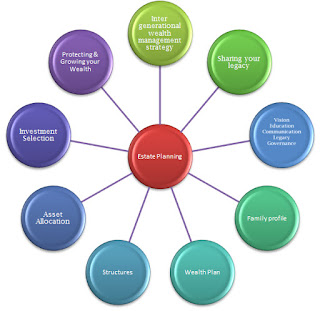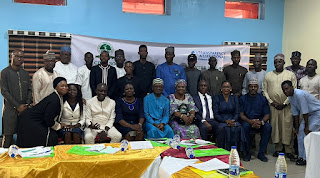Achieving HIV-Free Babies Through Adherence To HIV Treatment
Chioma Umeha
Nigeria contributes 12.4 percent of the global
burden of HIV infected children with an estimated number of 267,000 living with
the virus, says 2017 Joint United Nations Programme on HIV/AIDS, (UNAIDS)
report.
The report also states that Nigeria has the second
largest burden of Human Immunodeficiency Virus and Acquired Immune Deficiency
Syndrome, (HIV/AIDS) and also contributes the largest proportion of new
vertically acquired HIV infection among children.
With 95 percent of the National HIV response
driven by donor partners, including Prevention from Mother To Child
Transmission of HIV, (PMTCT), and pediatric treatment services, experts say it
is important that mothers adhere to treatment in order to eliminate Mother To
Child Transmission Of HIV (eMTCT).
According to research, drugs adherence requires 95
per cent to achieve viral suppression and reduce Mother To Child Transmission
of HIV, (MTCT). By viral suppression, the HIV virus loses its ability of being
transmitted to another person.
To ensure drugs adherence and achieve the ‘Goal of
eMTCT by 2020,’ Nigeria has initiated strategies to curb HIV transmission from
mothers to their children.
Dr. Ijaodola Olugbenga, the Assistant Director and
Head of PMTCT of the National AIDS And STIs Control Programme, (NASCP), Federal
Ministry of Health, said that the
strategy entails ensuring that at least
90 per cent of infected women have access to comprehensive prevention of
mother-to-child transmission of HIV services, including, antiretroviral drugs,
(ARVs), during pregnancy, labour, delivery and breastfeeding period.
Dr Olugbenga listed comprehensive intervention
package to PMTCT which includes; HIV Testing Services, (HTS), Provider
Initiated Testing and Counselling, (PITC), Infant Feeding Counseling, family
planning counselling and services, ARV and Cotrimoxazole prophylaxis for mother
-infant pairs, early infant diagnosis and linkage to treatment.
Others are; screening of all pregnant women for
hepatitis, syphillis and other Sexually Transmitted Infection, (STIs),
screening of the mother for cervical cancer as well as eligibility assessment
for lifelong anti retroviral therapy.
Currently, there are essential activities to
ensuring that women living with HIV do not have babies with the virus, the
Assistant Director, NASCP added that these efforts are geared towards women
giving birth to HIV-free babies.
The Head of PMTCT said the on-going activities
includes; Routine HIV testing services for all pregnant women attending ante
natal care, labour and postnatal with appropriate documentation.
He added that there is “Initiation of all newly
identified positive pregnant women on Anti Retroviral Therapy, (ART) with
referral to adult ART clinic after PMTCT. Appropriate classification of HIV
Exposed Infant, (HEI) risk and initiation on recommended ARV prophylaxis -viral
load for all pregnant women 32 to 36 weeks gestational age.
The rest according to him is; “Testing of all HEI
at two months, using early infant diagnosis from two to18 months and rapid test
at 18 months and documented referral of all HIV positive infants to pediatric
ART.”
Presenting the 2017 Maternal PMTCT Cascade, at a
media dialogue, recently organised by the Child Right Information Bureau,
(CRIB), Federal Ministry of Information with support from United Nations
Children’s Fund, (UNICEF) held in Calabar, Cross River State, Dr Olugbenga
noted that 165,474 are estimated mothers needing PMTCT.
The cascade shows that 64,811 women tested HIV
positive (old and new in ANC), while 50,890 are HIV positive mothers on ART,
even as 24,026 are HIV positive mothers who delivered at the health facility
booked and unbooked.
It further estimated that in 2017, 221,729
children aged zero to14 were living with HIV; the number of those currently on
ART were put at 54,167; children with viral load test result were 10,464 while
those with viral load suppression 4,699.
Dr Olugbenga also said NASCP has put up some
strategy focused on saving children from HIV as follows; increase ANC uptake
and improving facility based delivery, increase HIV testing coverage among
pregnant women, provision of ARVs for the positive pregnant women during
delivery and breastfeeding period.
“Increase Dried Blood Spot, (DBS) and early infant
diagnosis testing coverage, improving the pediatric ART management,
coordination and harmonization of efforts, improving data harvesting and
management.”
However, there are limitations in carrying out
these ongoing strategic efforts as well as full implementation of these plans,
Olugbenga revealed that; there is inadequate proportion for HIV programme in
National and State budget, dwindling support from partners, socio- economic
challenges, poor health seeking behavior, culture, myths, misconceptions,
stigmatisation.
He further said there are laudable plans to
sustain the efforts thus far by partners and such plans are; sustaining the
drive, improve collaboration, more granular level effort to identify priority
States, LGAs, wards that can achieve eMTCT with minimal efforts.
To ensure effective integration of PMTCT in the
Maternal and Newborn Child Health (MNCH) platform, there is need for high level
advocacy for eMTCT and pediatric ART as well as resource mobilization, he said.
Earlier in his speech, Mr. Olumide Osanyinpeju,
the Deputy Director and Head, Child Rights Information Bureau, showed concern
over the large number of children in the country at risk of contacting the HIV
from their mother adding that proactive measures should be taken by all
stakeholders to save the children from the imminent danger.
Osanyinpeju however said that the Federal
Government is working relentlessly with relevant stakeholders to achieve an
HIV/AIDS free nation, stressing that journalists should champion the course of
the realisation of the rights of children to live free from the disease.
He said; “it is worthy to note that it has been a
difficult task propagating that children reserve the rights to issues affecting
them, the right to live free from diseases, HIV/AIDS in focus. May we not lose
sight of the fact that a large number of Nigerian children are still at risk of
this infection, a host of them living in our communities under emergencies and
insurgencies.
“We must understand that the deprivation of the
foregoing is an infringement on the rights of a child. There is need for all to
rise up against this menace as routine transmission may leave life-long scars
that may affect the child emotionally and psychologically.
“As you know, government alone cannot fight this
cause, hence, the need to collaborate with Agencies, Non-Governmental
Organisations and other line partners and Organisations to advocate on how best
to address the issue.
“We need the media to start making the Nigerian
people think in the interest of the Nigerian child, to tackle the low level of
awareness that exists amongst our people towards the realisation of the health
needs of children within the framework of child’s right, and obtaining the
desired support from government and institutions,” Osanyinpeju added.
He enjoined the media to strive and develop clear
messages that will sensitise and inspire the Nigerian people and use stories,
reports to create massive awareness as well as enlighten the people, duty
bearers, and indeed all levels of government on the need for prevention and
elimination of Mother To Child Transmission of HIV.
Osanyinpeju further tasked journalists to
mainstream the issue so as to increase the knowledge among spouses, partners
and family members, as well as addressing HIV-related stigma and deep gender
inequalities in decision making.
“By so doing, it will go a long way in realizing
the objective of UNICEF at advancing Children’s rights and enhancing their well
being. We must work in line with the United Nations General Assembly Resolution
to intensify global efforts to eliminate this menace.”
Similarly, in a recent report dissemination, Mr. Greg Ashefor, the
Ag.Director, Research Monitoring and Evaluation Directorate, National Agency
for the Control of HIV/AIDS, (NACA), corroborated; “Based on our data, only 1,
090,233 persons (747, 853 females and 342, 380 males) are currently on HIV
treatment in Nigeria as at June 2018.”
This number, he said includes all persons on
treatment programmes supported by the President’s Emergency Plan For AIDS
Relief, (PEPFAR), Global Fund and the Federal Government.
PEPFAR is the United States government initiative
to address the global HIV/AIDS epidemic and help save the lives of those living
with the disease, primarily in Africa,




Comments
Post a Comment